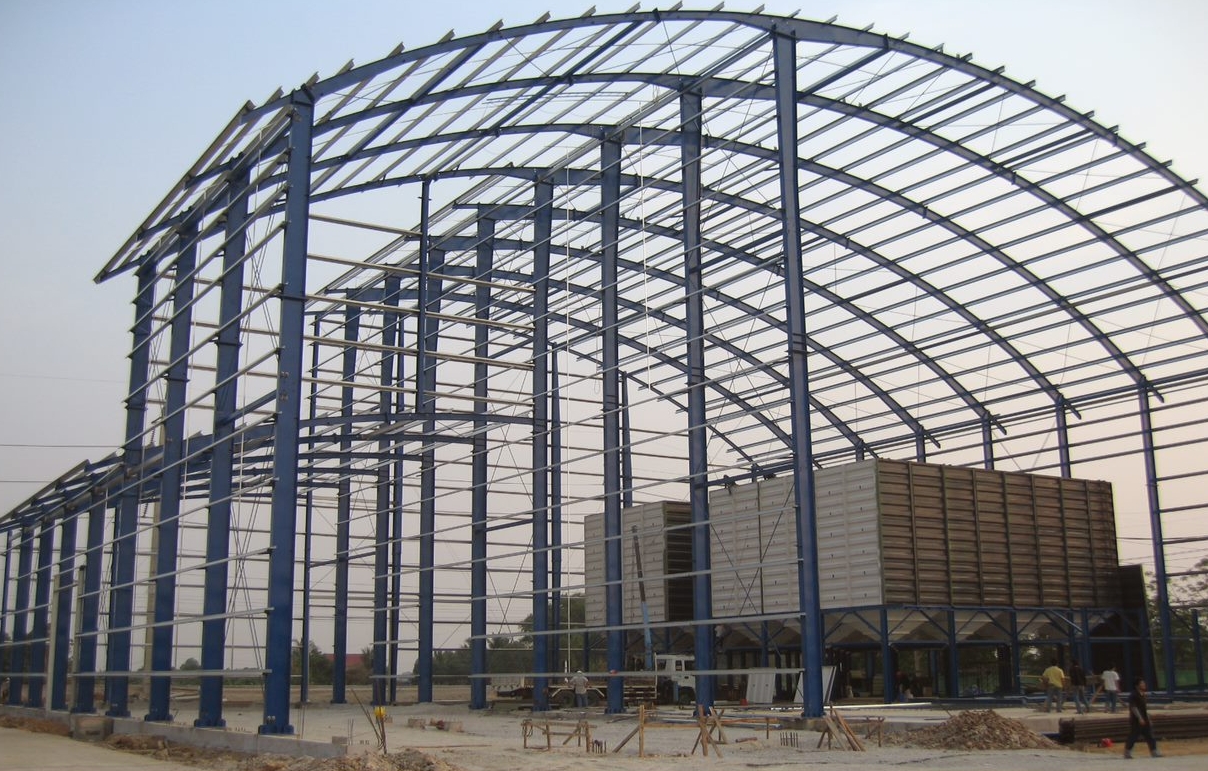- NEWS -

Steel Arch Architecture: Definition, Types, and Modern Applications
Steel arch architecture is a structural design approach that uses curved steel members to create self-supporting, long-span structures that distribute loads efficiently. Arches are one of the oldest and most versatile, durable, and aesthetically striking construction techniques—modernized with high-strength steel for superior strength, flexibility, and architectural elegance.
This guide explores:
✔ What defines steel arch architecture?
✔ Types of steel arches (fixed, two-hinged, three-hinged, tied arches).
✔ Advantages over traditional designs.
✔ Iconic examples in modern construction.
1. What Is Steel Arch Architecture?
A steel arch is a load-bearing, curved framework made from steel beams or trusses that transfers weight outward to abutments or foundations, eliminating the need for internal supports. Steel’s high tensile strength allows arches to span hundreds of feet while supporting heavy loads.
Key Features of Steel Arches:
Curved or parabolic shape for optimal load distribution.
Minimal internal supports (creating vast open spaces).
Suitable for bridges, stadiums, and industrial structures.
Strong resistance to bending and buckling (unlike concrete or wood).
2. Types of Steel Arches in Modern Construction
???? 1. Fixed Arch (Rigid Arch)
✅ Best for: Strong, permanent structures needing maximum stability
✅ Characteristics:
No hinges—fully rigid connections at supports.
Resists bending and torsion effectively.
Used where ground movement is minimal.
???? Examples:
Sydney Harbour Bridge (Australia)
Gateway Arch (St. Louis, USA)
???? 2. Two-Hinged Arch
✅ Best for: Bridges, long-span roofs
✅ Characteristics:
Hinged at both supports (allows slight rotation).
Better flexibility under thermal expansion.
???? Examples:
Hell Gate Bridge (New York, USA)
Many modern highway bridges.
???? 3. Three-Hinged Arch
✅ Best for: Temporary or adjustable structures
✅ Characteristics:
Third hinge at the crown (top) for flexibility.
Easier to construct but less rigid.
???? Examples:
Prefabricated event stages.
Smaller pedestrian bridges.
???? 4. Tied Arch (Bowstring Arch)
✅ Best for: Bridges & large-span roofs with no side thrust
✅ Characteristics:
Horizontal tie rod absorbs outward thrust.
Eliminates need for heavy abutments.
???? Examples:
Newport Southbank Bridge (Ohio, USA – "The Purple People Bridge")
Modern stadium roofs.
3. Advantages of Steel Arch Architecture
Advantage Explanation
Long Spans (300+ ft) Fewer columns = open, flexible spaces.
Aesthetic Appeal Sleek curves suit modern & historic designs.
Durability Steel resists rust, fire, and extreme weather.
Faster Construction Prefabricated segments speed assembly.
Sustainability Recyclable steel reduces waste.
4. Iconic Steel Arch Structures Worldwide
????️ Gateway Arch (St. Louis, USA)
630 ft tall stainless steel catenary arch.
Symbol of modern American engineering.
???? Sydney Harbour Bridge (Australia)
World’s tallest steel arch bridge (440 ft tall).
⚽ Wembley Stadium Arch (London, UK)
1,033 ft steel arch supports the roof without columns.
???? Lupu Bridge (Shanghai, China)
One of the longest (1,870 ft) steel arch bridges globally.
5. Future Trends in Steel Arch Design
AI-optimized shapes for minimal material use.
Hybrid arch-cable systems for ultra-long spans.
3D-printed steel nodes for intricate designs.
6. Conclusion: Why Steel Arches Dominate Modern Architecture
Steel arch structures combine strength, beauty, and efficiency—perfect for bridges, stadiums, and landmark buildings. With advanced fabrication techniques, architects and engineers continue pushing the limits of span length and creative form.
Interested in steel arch construction?
Related Posts
Online Message
TOUCH WITH US
